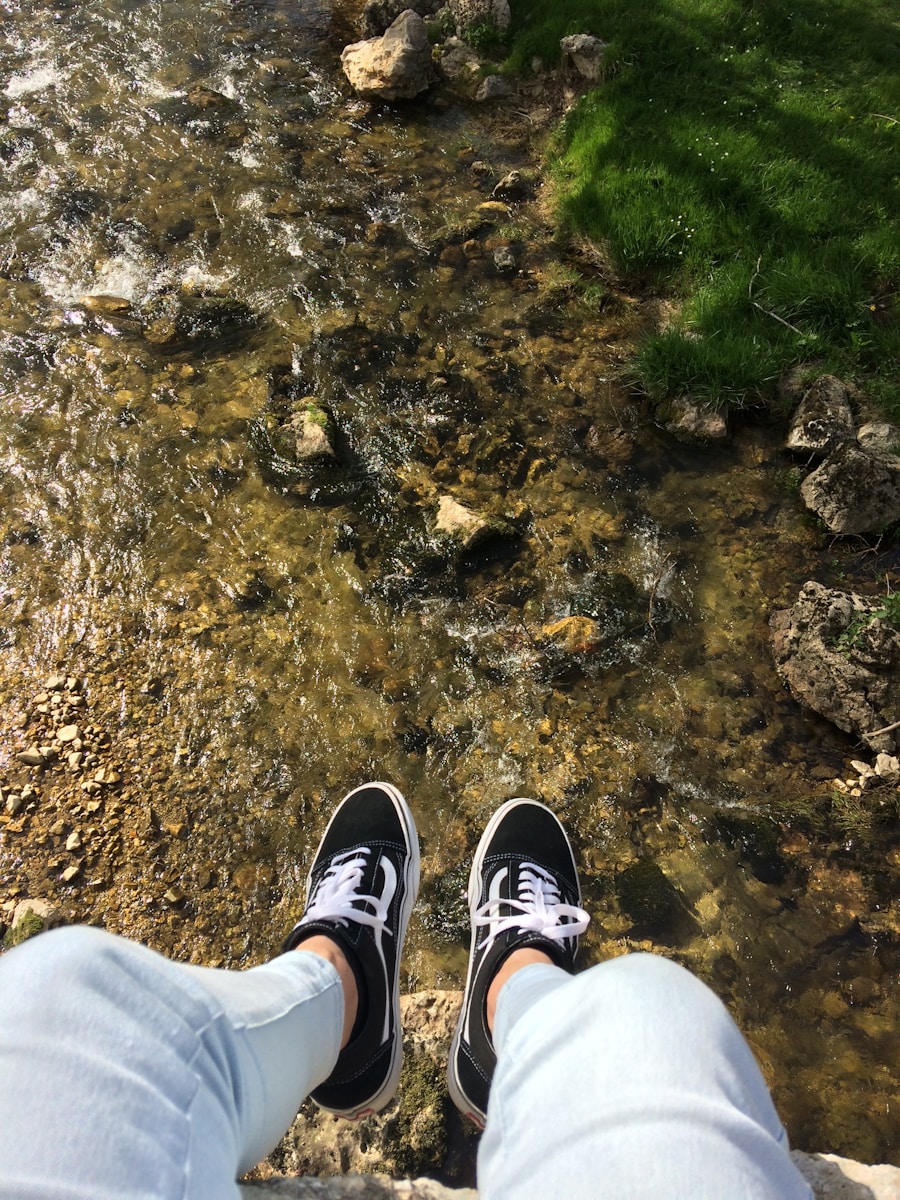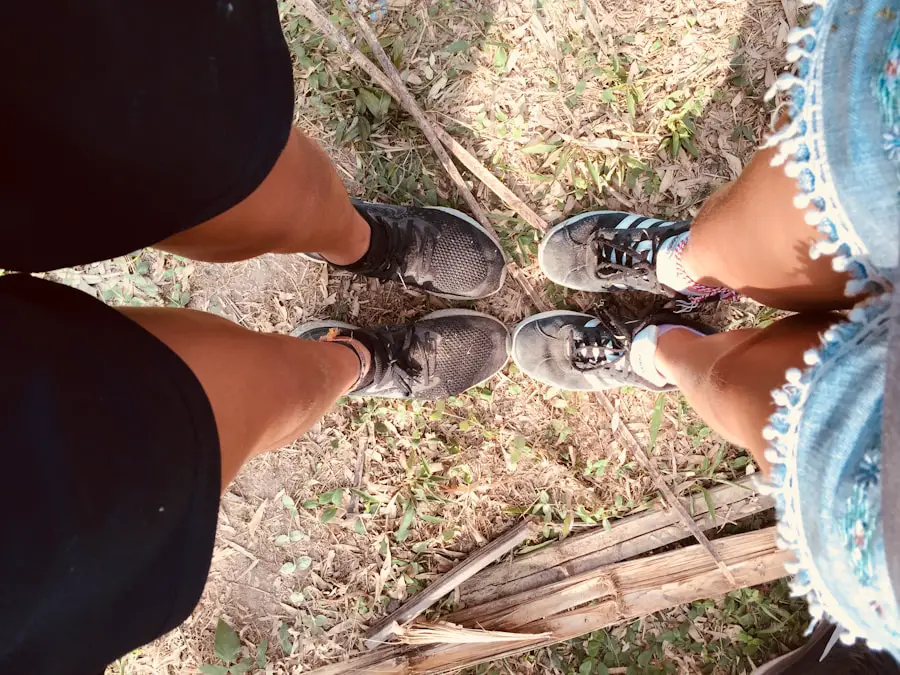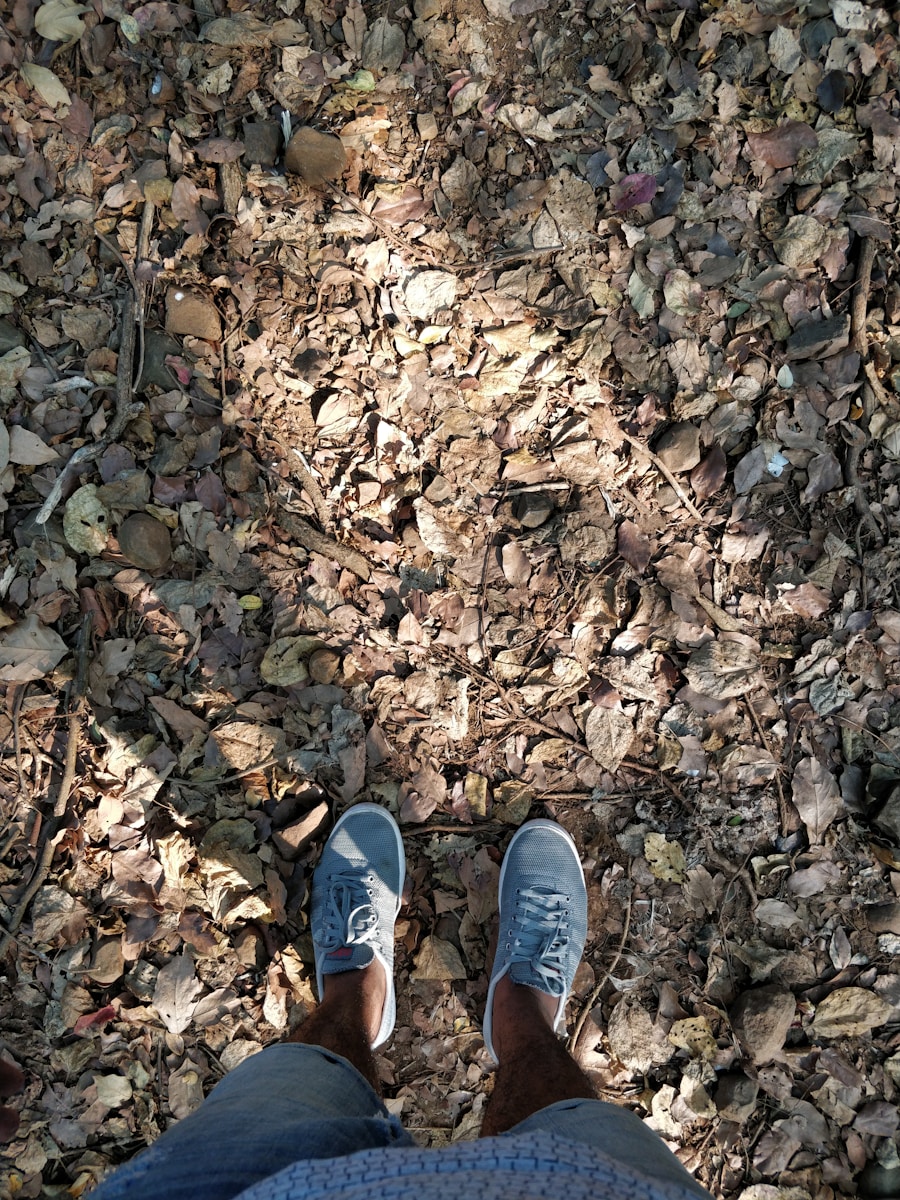The significance of a proper fit in hiking shoes cannot be overstated. A well-fitted shoe serves as the foundation for a successful hiking experience, directly influencing comfort, stability, and overall performance on the trail. When hiking, the feet undergo considerable stress due to uneven terrain, varying weather conditions, and prolonged periods of activity.
A shoe that fits correctly minimizes the risk of blisters, calluses, and other foot ailments that can arise from friction and pressure points. Moreover, a proper fit enhances the hiker’s ability to navigate challenging landscapes, providing the necessary support and traction to tackle steep inclines and rocky paths. In addition to physical comfort, the psychological aspect of wearing well-fitted shoes plays a crucial role in a hiker’s confidence.
When hikers know their footwear is secure and supportive, they can focus on their surroundings and enjoy the experience rather than being preoccupied with discomfort or pain. This mental clarity can lead to better decision-making on the trail, allowing hikers to engage more fully with nature and their companions. Therefore, investing time in finding the right fit is essential for both physical well-being and mental enjoyment during outdoor adventures.
Key Takeaways
- Proper fit is crucial for hiking shoes to prevent discomfort and injury
- Factors to consider when choosing hiking shoes include terrain, weather, and personal preferences
- Tight hiking shoes provide stability and support but can cause discomfort and blisters
- Tips for finding the right fit include trying on shoes in the afternoon and wearing hiking socks
- Properly sizing hiking shoes involves measuring both feet and allowing room for toe movement
Factors to Consider When Choosing Hiking Shoes
Selecting the right hiking shoes involves several critical factors that go beyond mere aesthetics or brand loyalty. One of the primary considerations is the type of terrain one will encounter. For instance, those planning to hike on rugged, rocky trails may benefit from shoes with a stiffer sole and enhanced ankle support, while casual day hikers might prefer lightweight shoes that offer flexibility and breathability.
Understanding the specific demands of the hiking environment is essential for making an informed choice. Another vital factor is the shoe’s material composition. Hiking shoes are typically made from a variety of materials, including leather, synthetic fabrics, and rubber.
Leather offers durability and water resistance but may require a break-in period. Synthetic materials, on the other hand, often provide better breathability and lighter weight but may not be as robust in harsh conditions. Additionally, considering the weather conditions is crucial; waterproof shoes are advantageous in wet climates, while breathable options are preferable in hot weather.
Evaluating these factors ensures that hikers select footwear tailored to their specific needs and preferences.
Pros and Cons of Tight Hiking Shoes

Tight hiking shoes can present both advantages and disadvantages that hikers must weigh carefully. On one hand, a snug fit can enhance stability and control during challenging hikes. When shoes are tightly fitted, they reduce the likelihood of foot movement within the shoe, which can help prevent blisters caused by friction.
This snugness can also provide a sense of security on uneven terrain, allowing hikers to feel more connected to the ground beneath them. Conversely, overly tight shoes can lead to discomfort and even injury. Prolonged pressure on the toes can result in conditions such as bunions or hammertoes, while restricted blood flow may cause numbness or tingling sensations.
Additionally, tight shoes can hinder natural foot movement, which is essential for balance and agility on the trail. Hikers must find a balance between a secure fit and comfort to ensure an enjoyable experience without compromising foot health.
Tips for Finding the Right Fit
| Factors | Metrics |
|---|---|
| Company Culture | Employee satisfaction rate, turnover rate |
| Job Role | Job satisfaction rate, career growth opportunities |
| Work-Life Balance | Percentage of employees working overtime, flexible work hours |
| Location | Commute time, cost of living |
| Benefits | Healthcare coverage, retirement plans |
Finding the right fit for hiking shoes requires careful consideration and attention to detail. One effective strategy is to try on shoes at the end of the day when feet are naturally swollen from daily activities. This approach helps ensure that the shoes will accommodate any swelling that may occur during long hikes.
Additionally, wearing the same type of socks that will be used on hikes during fitting sessions is crucial; thicker socks may require a slightly larger shoe size than thinner ones. Another tip is to walk around in the shoes for an extended period within the store. This allows hikers to assess how the shoes feel during movement rather than just standing still.
It’s important to pay attention to any areas of discomfort or pressure points while walking. A good practice is to perform a few squats or steps up an incline to simulate hiking conditions. If any discomfort arises during this trial period, it’s advisable to explore other options rather than settling for a pair that may cause issues on the trail.
How to Properly Size Hiking Shoes
Properly sizing hiking shoes involves more than just selecting a number based on standard sizing charts; it requires a comprehensive understanding of individual foot shape and size variations. To begin with, measuring both feet is essential since many people have one foot that is slightly larger than the other. Using a Brannock device or similar measuring tool can provide accurate measurements of length and width, ensuring that both feet are accommodated appropriately.
Once measurements are taken, it’s important to consider additional factors such as arch height and foot volume. Some brands offer different widths (narrow, standard, wide) to cater to various foot shapes. Trying on multiple brands is advisable since sizing can vary significantly between manufacturers.
A well-fitted shoe should allow for about a thumb’s width of space between the longest toe and the front of the shoe while providing a snug fit around the heel without slipping.
Common Misconceptions About Hiking Shoe Fit

Several misconceptions about hiking shoe fit can lead hikers astray when selecting their footwear. One prevalent myth is that shoes should be extremely tight for optimal performance. While a snug fit is important for stability, overly tight shoes can cause pain and long-term damage.
Many hikers mistakenly believe that discomfort will subside after breaking in new shoes; however, if a shoe feels painful during fitting, it is unlikely to become comfortable over time. Another common misconception is that all hiking shoes are created equal regarding fit and function. In reality, different styles—such as trail runners, mid-cut boots, and low-cut shoes—are designed for specific activities and terrains.
Hikers often assume that any shoe labeled as “hiking” will suffice for their needs without considering how each design caters to different environments or personal preferences. Understanding these misconceptions can empower hikers to make more informed choices when selecting their footwear.
Adjusting Laces for a Custom Fit
Lacing techniques play a crucial role in achieving a custom fit for hiking shoes. The way laces are tightened can significantly affect how well the shoe conforms to the foot’s shape and how securely it holds the heel in place. For instance, using a heel lock lacing technique can help prevent heel lift during descents, which is particularly beneficial when navigating steep trails or rocky terrain.
This method involves creating additional loops at the top of the shoe’s eyelets to secure the heel more effectively. Additionally, adjusting laces according to foot shape can enhance comfort during hikes. For individuals with high arches or wider forefeet, loosening laces in specific areas can alleviate pressure points while still providing adequate support.
Conversely, tightening laces around the midfoot can enhance stability without compromising comfort. Experimenting with different lacing patterns allows hikers to find what works best for their unique foot structure and hiking style.
When to Seek Professional Help for Hiking Shoe Fit
While many hikers can successfully find their ideal shoe fit through personal trial and error, there are instances when seeking professional help becomes necessary. Individuals with specific foot conditions—such as flat feet, high arches, or chronic pain—may benefit from consulting with a podiatrist or specialized footwear expert who can provide tailored recommendations based on their unique needs. These professionals can assess foot mechanics and suggest appropriate footwear options or orthotic inserts that enhance comfort and support.
Additionally, if hikers consistently experience discomfort or injuries despite trying various shoe sizes and styles, it may be time to seek professional advice. Persistent issues such as plantar fasciitis or Achilles tendonitis could indicate an underlying problem with foot mechanics that requires expert intervention. Professional fitting services offered by outdoor retailers can also provide valuable insights into finding shoes that align with individual foot characteristics while ensuring optimal performance on the trail.
If you’re considering the importance of proper footwear for outdoor activities, you may also be interested in an article discussing the best time to travel to Tanzania. This guide offers valuable insights into the ideal seasons for exploring this beautiful African destination. Check it out here for more information on planning your next adventure.
FAQs
What are the benefits of having tight hiking shoes?
Tight hiking shoes provide better stability and support for your feet, reducing the risk of injury and discomfort while hiking.
How tight should hiking shoes be?
Hiking shoes should fit snugly around the heel and midfoot, with enough room in the toe box to wiggle your toes. They should not be so tight that they cause discomfort or restrict blood flow.
What are the potential drawbacks of tight hiking shoes?
Tight hiking shoes that are too constricting can cause blisters, hot spots, and discomfort during long hikes. They can also restrict natural foot movement and lead to foot fatigue.
How can I ensure the right fit for my hiking shoes?
To ensure the right fit for your hiking shoes, try them on with the socks you plan to wear while hiking. Walk around in them to check for any discomfort or pressure points. It’s also helpful to get professionally fitted at a specialty outdoor retailer.
Are there different lacing techniques to adjust the tightness of hiking shoes?
Yes, there are various lacing techniques, such as the heel lock or window lacing, that can help adjust the tightness of hiking shoes in specific areas to provide a more customized fit.
